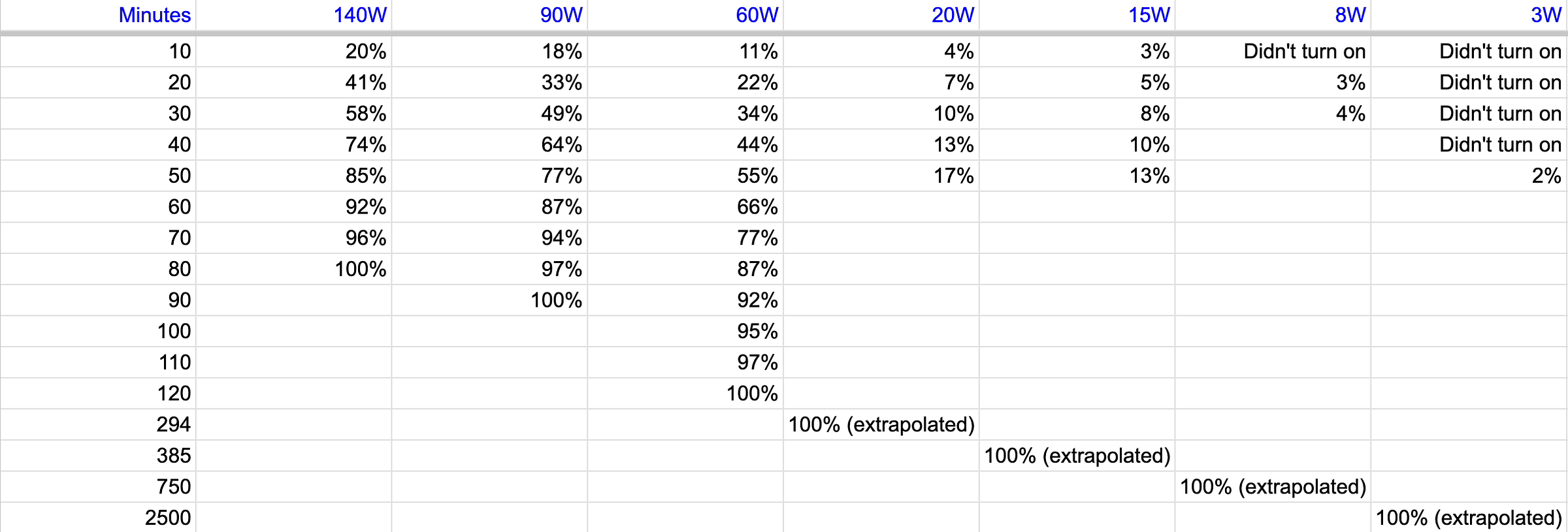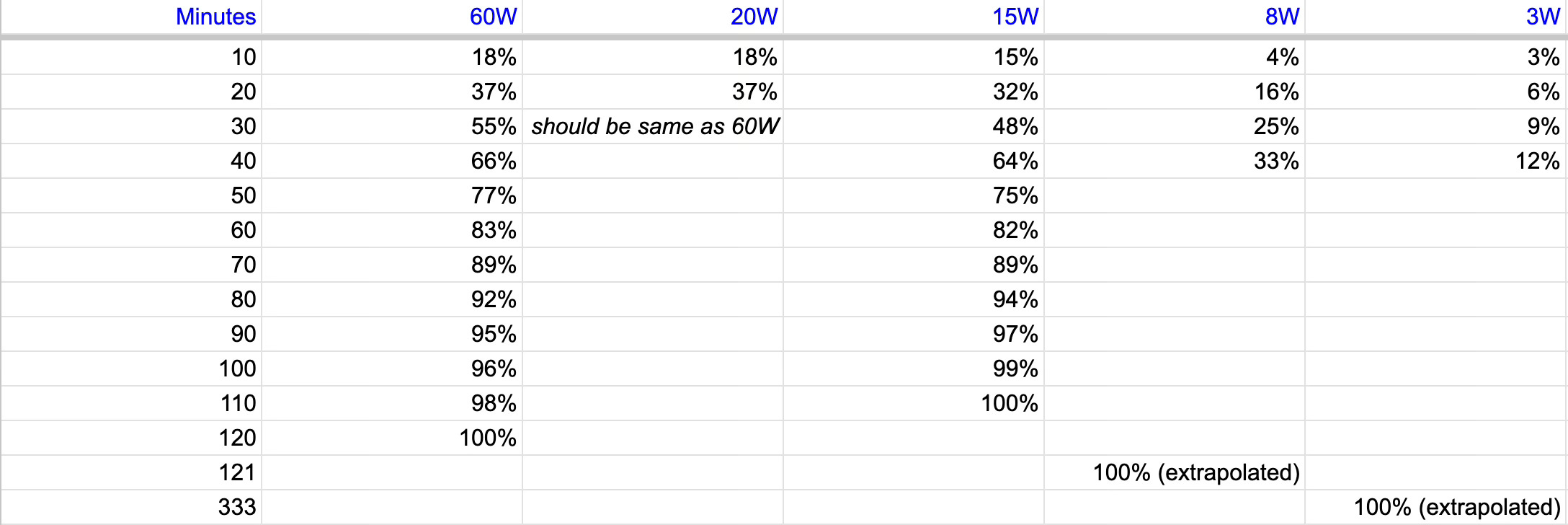What I Discovered Testing Chargers: Speed, Startup, and Shutdown
I own a
Macbook Pro 16-inch M1 Pro.
iPhone 151
I tested them with various chargers to see what works best, and this is what I’ve learnt:
In my Verna’s USB-A port, I keep an -A to -C cable plugged in2.
When I travel, I take my 5-foot cable3 . Why? Because it’s the longest cable I own, so it’s convenient when the plug point is far way. And it’s not thick or unwieldy the way some other USB-C cables are, so it’s easy to roll into a small circle to put in a zip pocket of a backpack.
If I’m traveling with my Mac, I take my 86-watt charger4. Why? One thing I realised in this test is that not all USB-C cables can carry more than 60W. The aforementioned cable can carry only 60W. Since the cable can carry only 60W, there’s no point to carrying my 140W charger5 when the 86W is smaller.
If I’m not taking my laptop, I take my 20-watt charger. Why? A higher-rated charger doesn’t charge the phone any faster6.
without any suffix like Pro or Plus.
The Verna also has a -C port, and it delivers 27W, but it doesn’t support CarPlay. So I plug my phone into the -A port. It delivers 8W — enough to keep the phone running with navigation and a call even if it was powered down when plugged in.
Assume USB-C except when otherwise stated.
It’s labeled 87W, but System Information shows 86. This is the one that came with the 15-inch Macbook Pro, the first version with USB-C ports and the defective butterfly keyboard.
A Mac charger also charges a phone, contrary to many people’s belief.
Which came with the aforementioned 16-inch Mac.
My Mac can accept 140W only via the MagSafe port, which requires me to carry a MagSafe cable just for my Mac. Since I prefer to travel light, and even at home I want fewer cables around, I just charge at 60W.
With 90W charging, my Mac powers on immediately even if it’s drained. This matters if I’m late for a meeting. With a slower charger, it has to charge for a while before it powers on, even if I press the power button. This is how long it takes for the Mac to power on with each charger:
140W: immediate
90W: immediate
60W: 4 min
27W (Hyundai Verna): 7 min
20W (Apple iPhone charger): 10 min
15W (the charger that came with the Bose Portable Speaker): 10 min
8W (the Verna’s USB-A port): 20 min
3W (the USB-A port of my receiver, the Denon DRA-800H): 50 min!
(Ports are assumed to be USB-C except when I say otherwise.)
Second, an anaemic charger causes a Mac to power off while plugged in. To test this, I maxed out the brightness, played a HDR UHD movie, synced Apple Photos, and did a HandBrake encode of the aforementioned movie, which is 20 GB. With a 27W charge, the Mac didn’t power off despite starting drained. In fact, it slowly gained charge: 3% → 4% after many minutes → 5% after many minutes. So, if I have to attend an important video call from my car, the 27W it supplies is enough. By contrast, with a 20-watt charger, it may gain a percentage of charge, then lose a percentage, then gain another percentage. This is risky because it may power off.
The third aspect of charging is charging speed:
With the slow chargers, I didn’t have the patience to wait for 100%, so I extrapolated.
I tested these starting drained, Optimised Charging off in System Settings, the lid closed, and all apps that appear in Cmd-Tab shut down except Chrome.
All the above make the iPhone turn on instantly when it’s drained.
3W is not enough power to keep it running — it has powered down mid-navigation in my car.
If the Mac isn’t going to be used for time-critical things like attending a meeting, and only to watch TV series, I can skip its charger and take the iPhone charger. This will require a behavior change: plug in the Mac to charge whenever possible. If I’m going out, plug it in and go. If I’m working on it, plug it in. Don’t wait for it to run low before plugging it in.



